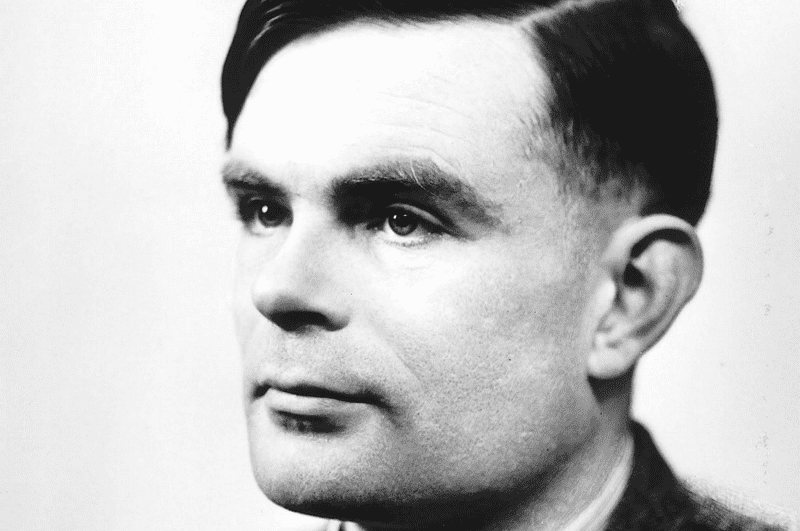
Alan Turing. Credit: Public Domain.
Alan Turing is famous as the father of computer science and artificial intelligence, as well as a WWII code breaker. However, Turing was also heavily involved in what was, at the time, an obscure field of science: mathematical biology. In 1952, just two years before his death, the brilliant British scientist published a paper in which he proposed a mathematical model that finally described how embryonic cells turn into complex structures like organs or bones. Now, Chinese researchers have built a unique nanostructure of tubular strands inspired by Turing’s work in mathematical biology. They’ve incorporated the structure into a filter that removes salt from water three times faster than some conventional filters.

Dot-based and tube-based Turing-type membranes (imaged with electron microcope). Credit: Z. Tan et al./Science
Turing structures arise when imbalances in diffusion rates make a stable steady-state system sensitive to small heterogeneous perturbations. For example, Turing patterns occur in chemical reactions when a fast-moving inhibitor controls the motion of a slower-moving activator. The motion causes the inhibitor to push back the activator, causing a pattern of spots or stripes to appear on the product. It’s not clear whether this reaction-diffusion process does indeed take place at the cellular level, but previously scientists have used it to explain zebra stripes, sand ripples, and the movements of financial markets.
Attempts to synthesize such structures have so far been confined to 2D patterns. Now, thanks to the marvels of 3D printing, a team of researchers at Zhejiang University in Hangzhou, China have created a 3D Turing structure out of a polyamid (a material similar to nylon). The substance is the result of the reaction between piperazine and trimesoyl chloride. In typical conditions, trimesoyl chloride diffuses faster than piperazine but not fast enough to result in a Turing structure. The researchers, led by material scientist Lin Zhang, used a nifty trick: they added polyvinyl alcohol to the piperazine, further lowering its diffusion rate and allowing it to act as the activator to the trimesoyl chloride’s inhibitor.
The resulting material is a rough, porous mesh with a nanostructure resembling a Turing pattern. The Chinese researchers were even able to print two variants: dots and tubes. These are the two types of self-organizing structure predicted by Turing’s model.
The primary objective of the new study was to produce 3D Turing structures. However, the researchers were amazed to learn that membranes fashioned this way were incredibly efficient water filters. Due to the filter’s tubular structure, water can pass through a much larger surface area compared to conventional filters. In experiments, the amount of table-salt inside a slightly saline solution passing through the Turing filter was reduced by half. The Turing filter proved much more efficient with other salts: magnesium chloride was reduced by more than 90%, and magnesium sulfate (aka Epsom salt) was reduced by more than 99%, as reported in the journal Science.
The membranes may be impractical on their own for desalinating seawater due to the rather low effectiveness for this purpose. Zhang, however, says it could be used to pretreat the seawater before eliminating the rest of the salt via reverse osmosis, which would make the overall process much more efficient. The tubular Turin filter could also be useful for purifying brackish water and industrial wastewater. And perhaps, in the future, the tubular Turing structures could be used to fashion artificial veins or bones. Turing would have been so proud!









